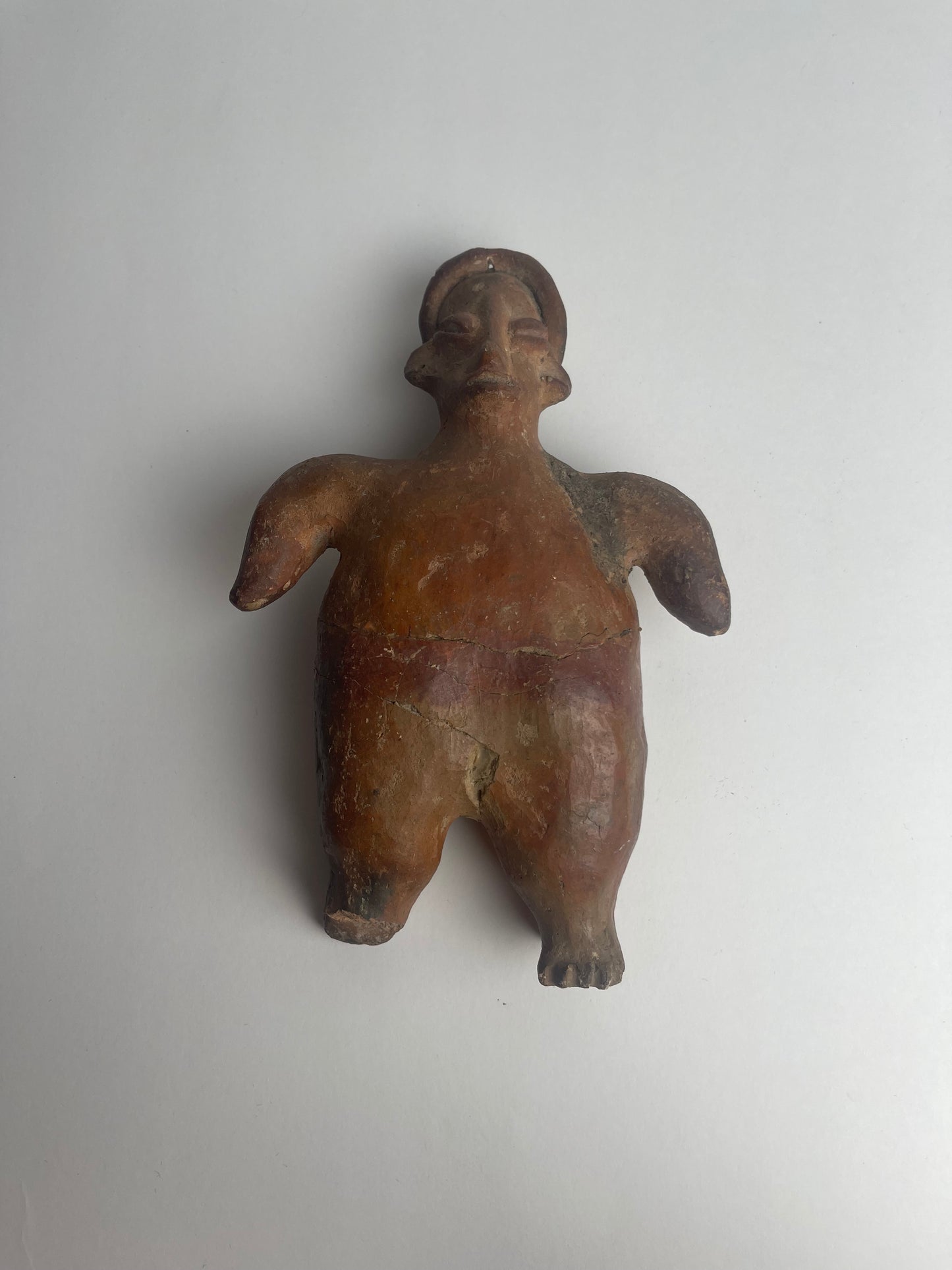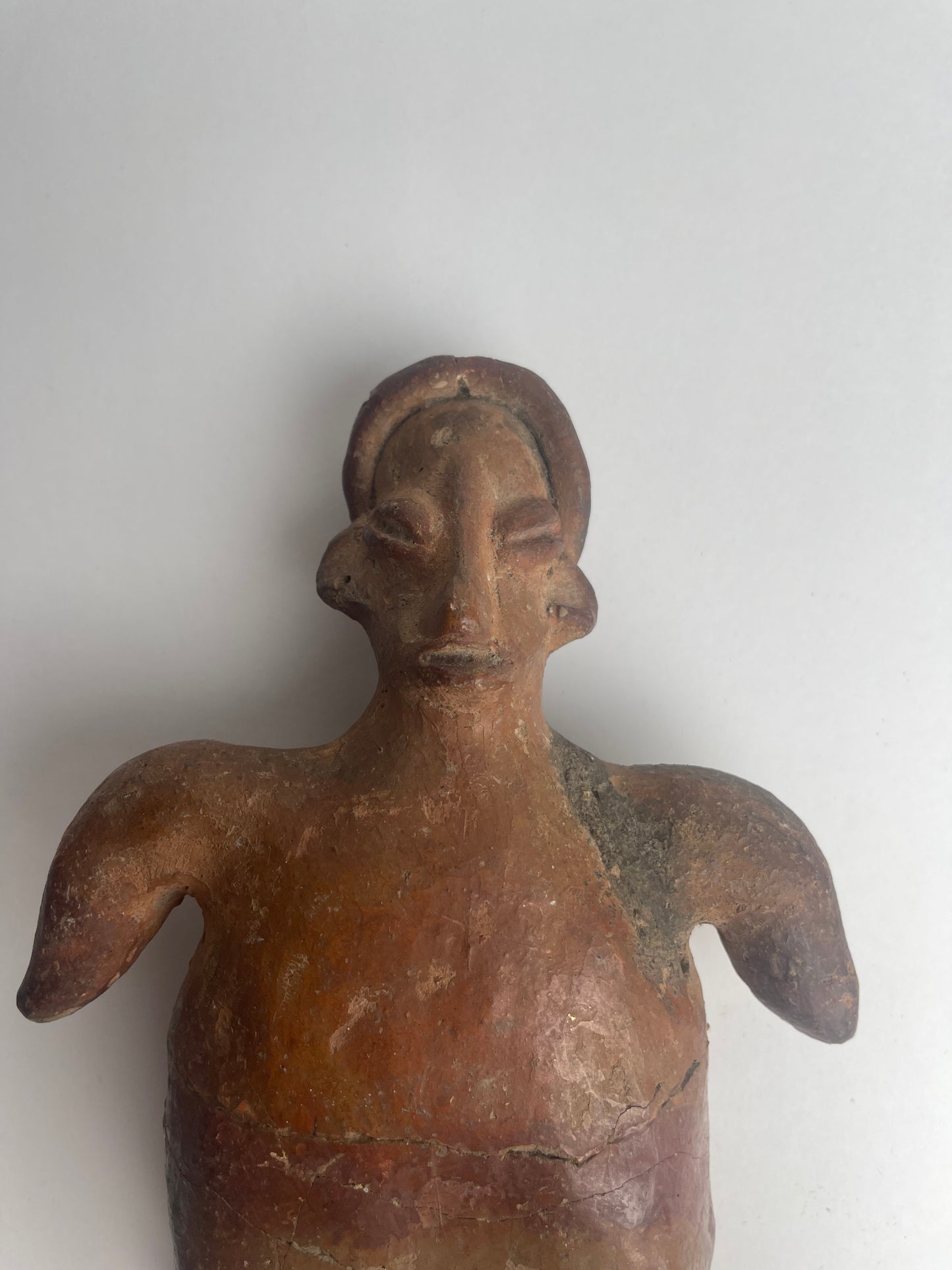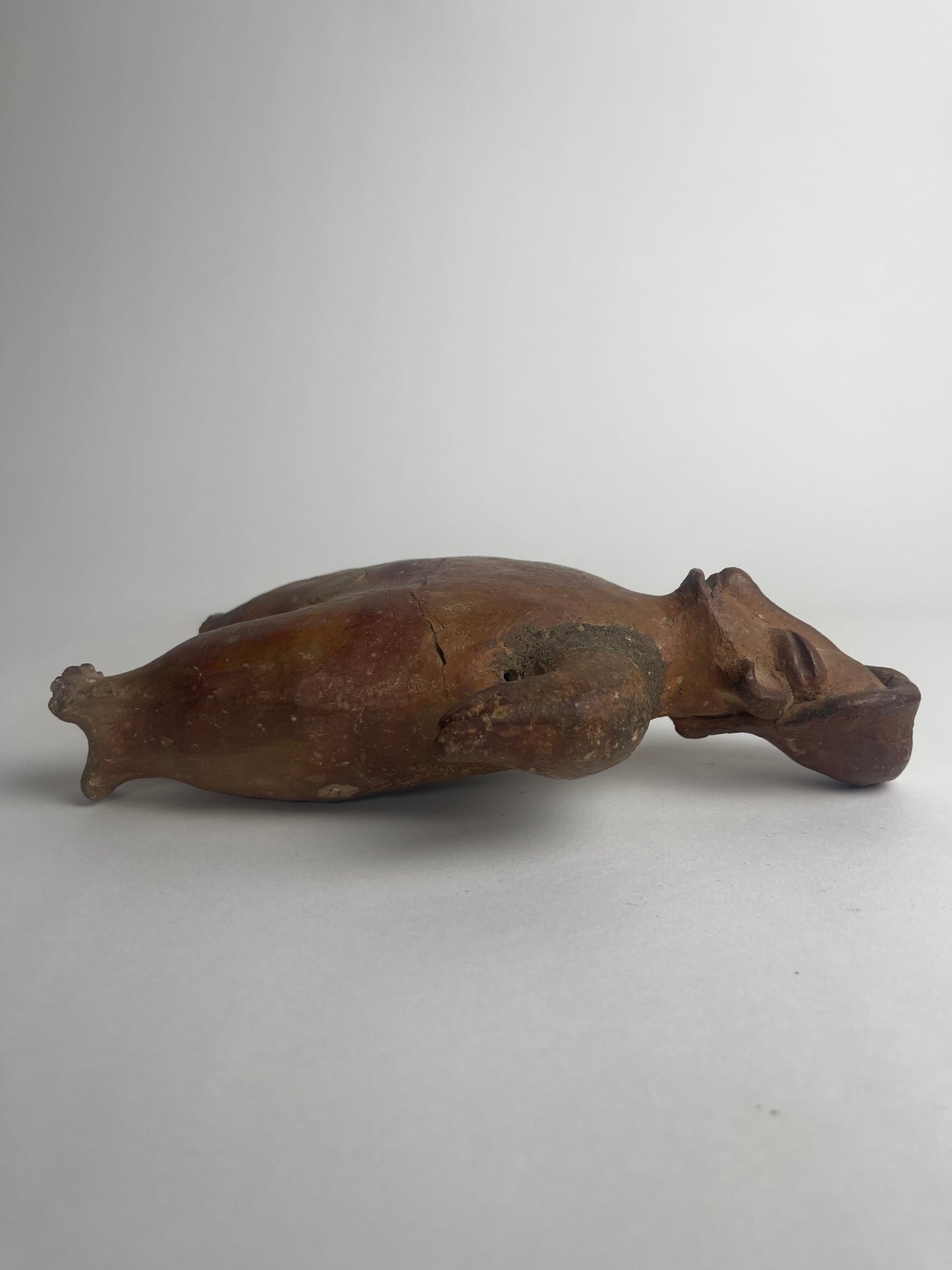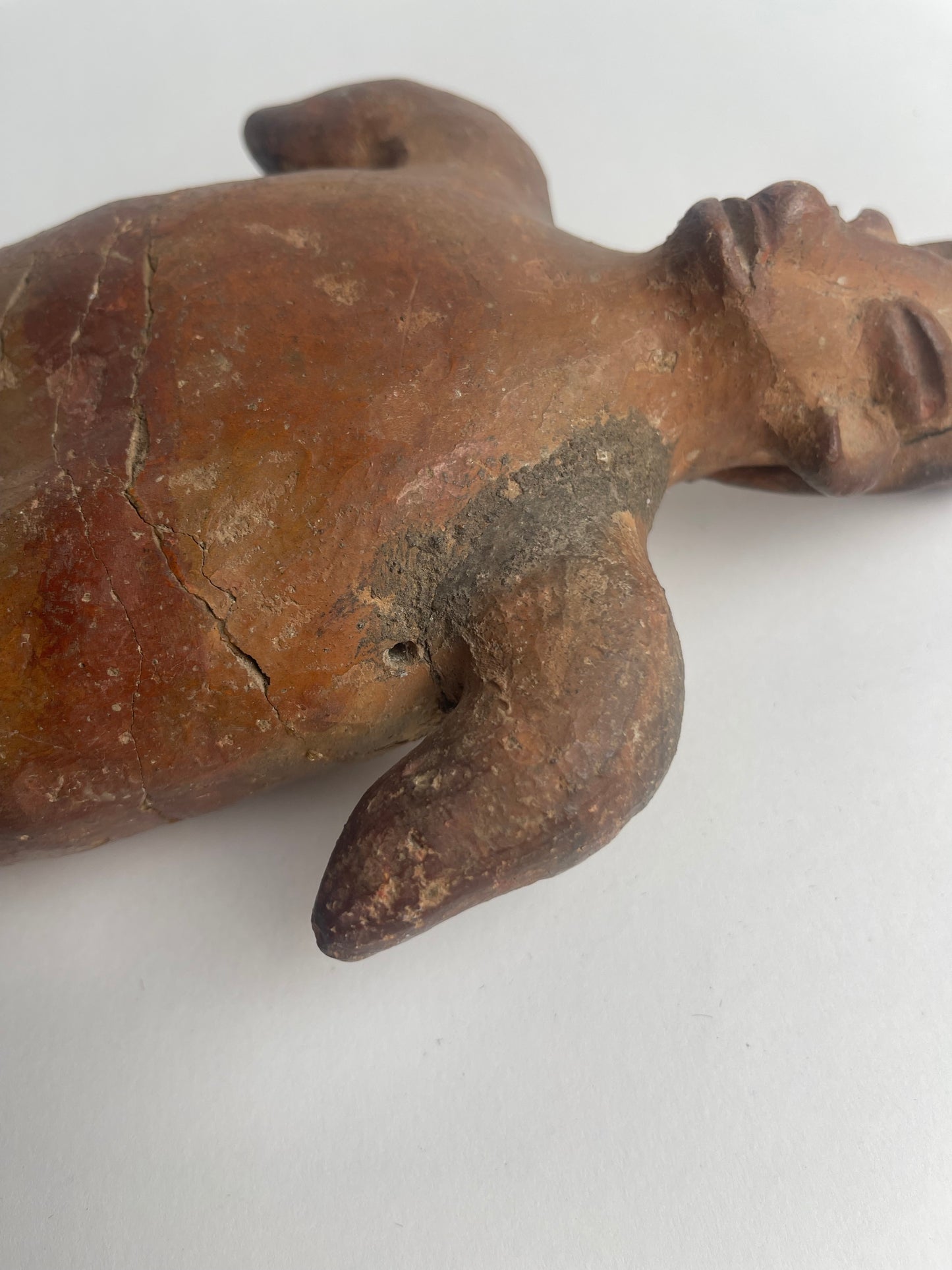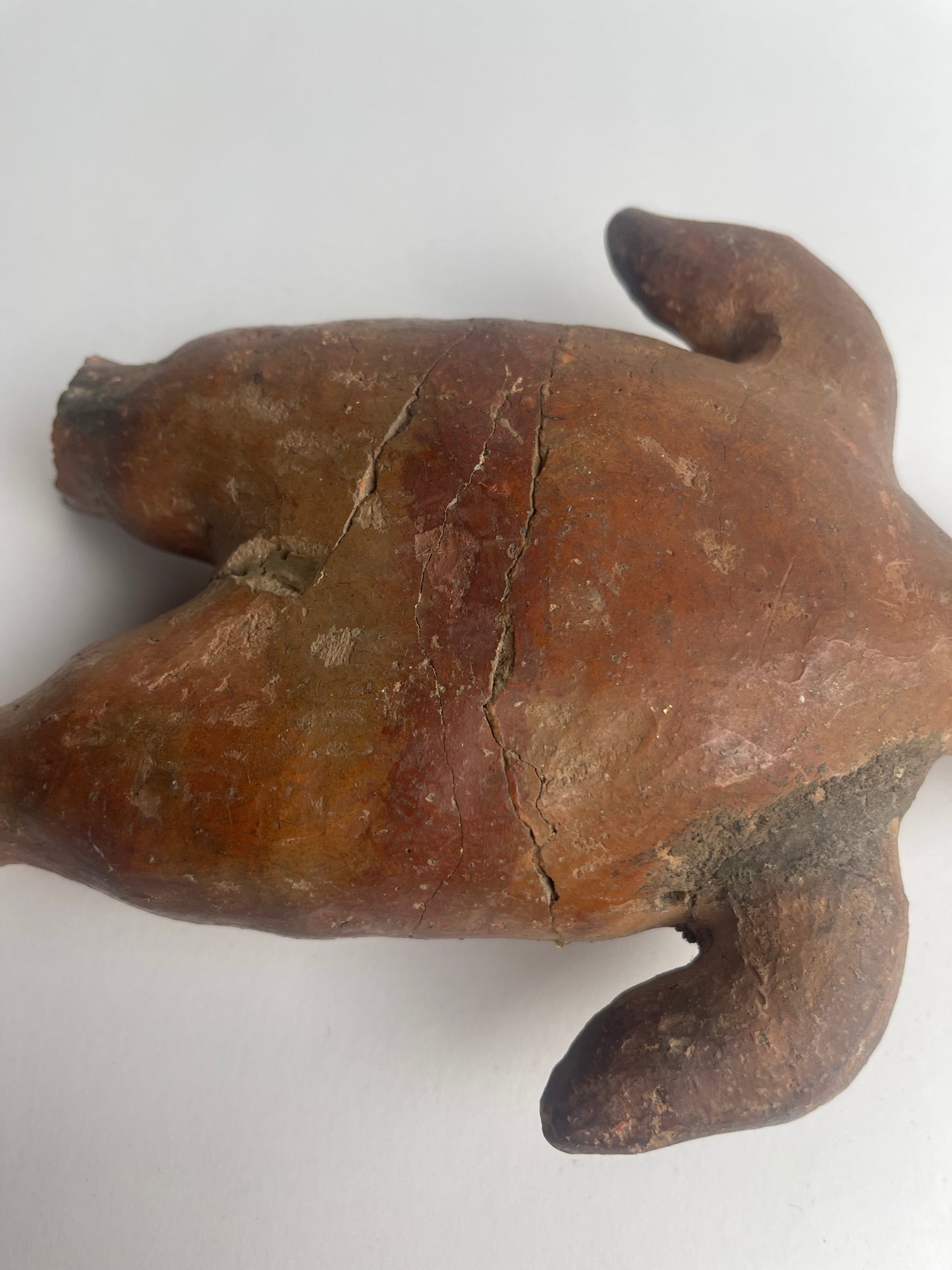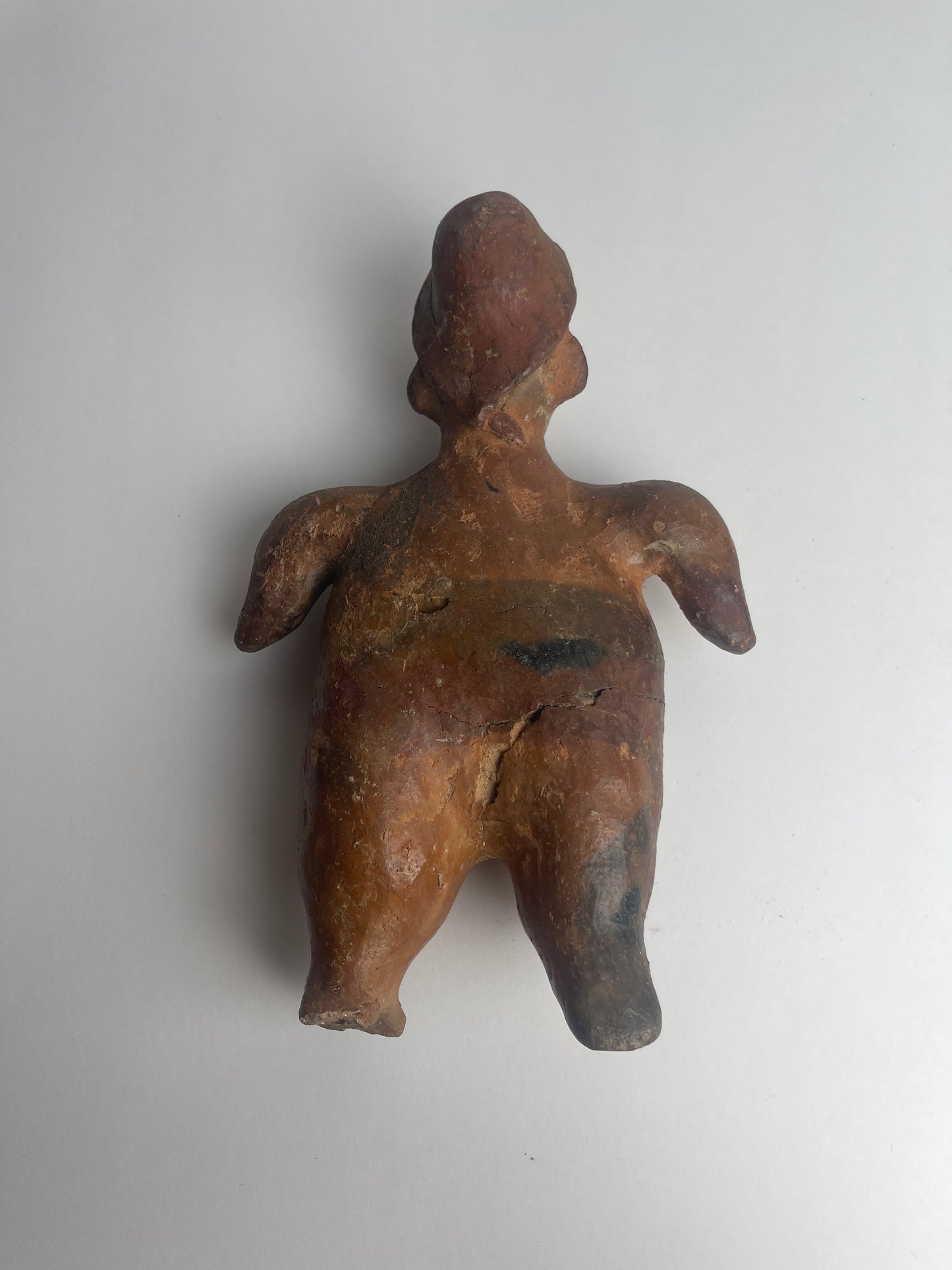Figure
Figure
For questions email hello@curiocollect.com
Colima, Mexico
300 BCE – 300 AD
This whimsical Colima figure, often affectionately dubbed the "gingerbread man" for its stylized, flattened form and outstretched limbs, comes from the shaft tomb tradition of Western Mexico, most likely dating to 300 BCE – 300 CE. Crafted from burnished red clay, the figure has a rounded, compact body with simplified arms and legs splayed outward, evoking a joyful, almost dancing posture.
Its features—such as the dot-like eyes, broad smile, and small nubs for hands and feet—give it a playful, almost modern charm. But behind this charming façade lies a deeper significance: figures like this were placed in tombs as companions, guardians, or representations of the deceased, symbolizing vitality, protection, or social identity.
Though its form may remind us of a cookie, its meaning is anything but sweetly trivial. It stands as a lighthearted yet sacred artifact, bridging joy and ceremony in the rich funerary traditions of ancient Colima culture.
Ex Georgia collection - provenance letter available
Condition: Extensively broken and restored. Loss to one foot
2.0 in. length
5.5 in. width
8.5 in. height
Couldn't load pickup availability
Share
